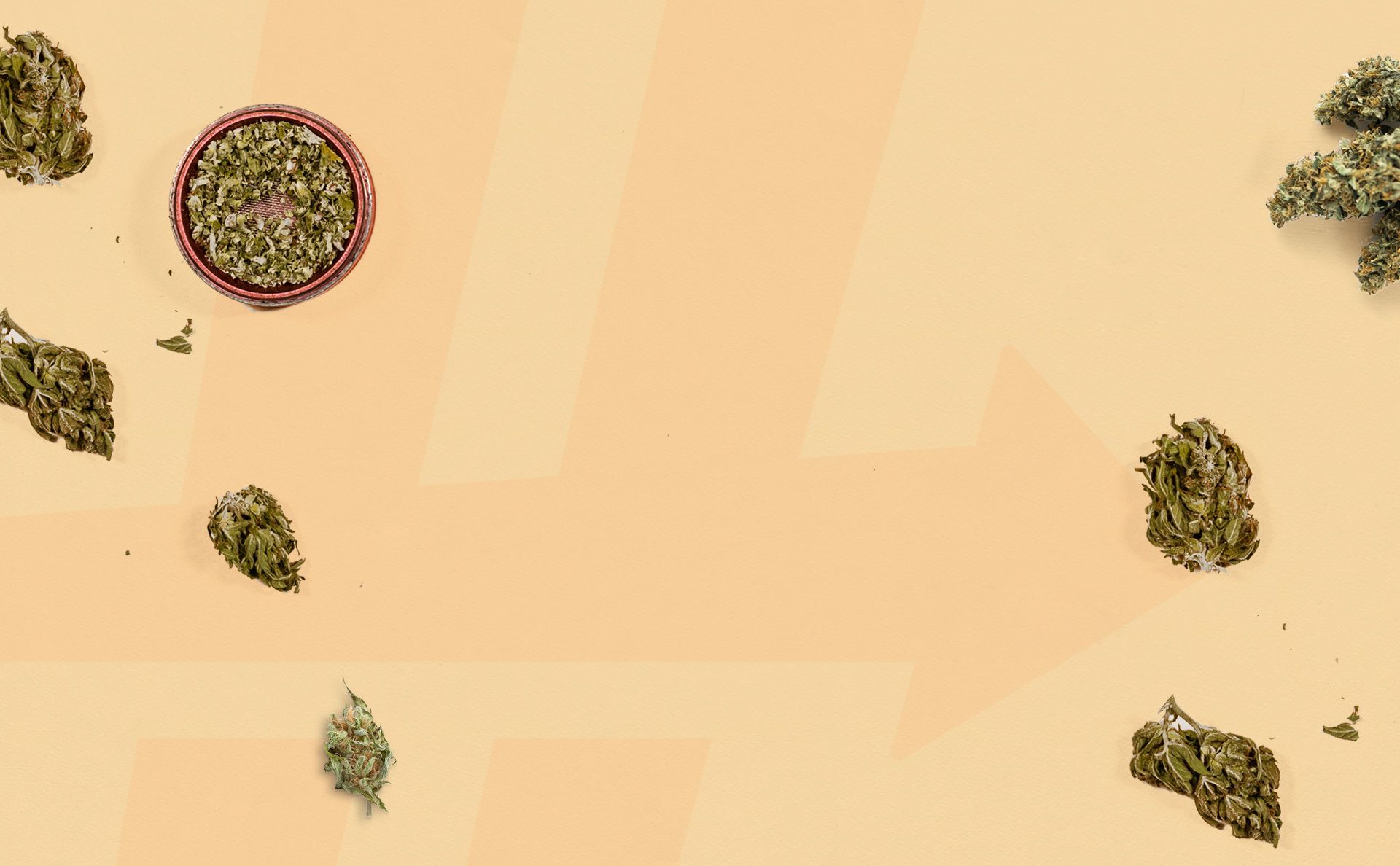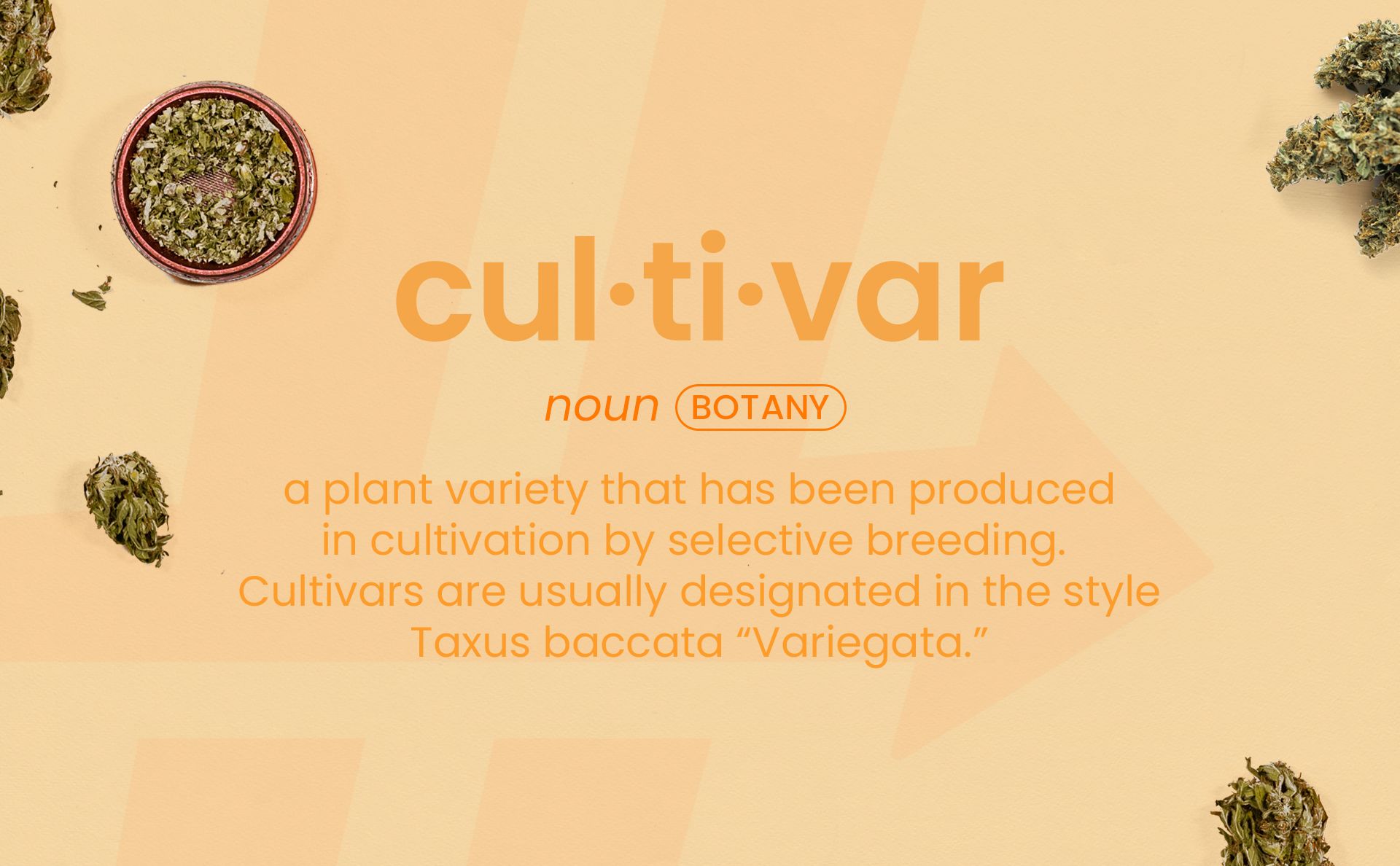Cultivar vs Strain
Often misdescribed as strain, cannabis cultivars mean cultivated variety. We describe what a cultivar is, as well as other important plant-related terms.

In our previous chapter, we discussed why words matter when it comes to the way we describe cannabis. In this chapter, we cover perhaps the most common mistake even experienced consumers make when talking about cannabis: using the word strain instead of cultivar.
Cultivar
From originating landrace varieties, breeders and growers have developed thousands of cultivars, often misdescribed as strains. A cultivar is short for cultivated variety, which is an easy way to remember the two. While you will often hear many cannabis professionals and enthusiasts use the word strain, this is incorrect.

A cultivar is defined by its phenotype, which is defined as observable characteristics in an organism. In botany, cultivars function as to how plants are grouped, based on a set of criteria. For cannabis, breeders select desirable traits of existing plants and then form new ones. Examples of such traits include resistance to pests and mold, flavor, potency, and effect.
Variety
In botany terms, only one species of cannabis exists, and that’s Cannabis Sativa. Indica of course exists, but the plant species classification includes Sativa because this is the type of cannabis plant first identified in nature, and therefore described accordingly. There is much need for a better classification system in cannabis, but more on describing cannabis in other guides and blog articles.
With this in mind, there are many varieties of cannabis, the first of which to be discovered was what’s called landrace varieties. These plants occur in the wild and are native to their area. The potency, consumption, smell, and taste of landrace varieties depend entirely on their region of origin, geography, and the impact their environment has on them.
Chemovar
Perhaps a more accurate way to describe cannabis is by using the word chemovar. This term enables us to describe a plant’s cannabinoid content, terpenes, and flavonoids. Chemovars is a science-minded way of describing cannabis because we are measuring the chemical markers of flower. This method of identification provides us with the means to understand scientifically how a certain variety will affect consumers.
Conscious consumers need to understand chemovars since many plants have the same names but can produce vastly different experiences for each of us. This is due to the chemical profiles of these plants, known as chemovars, or chemotypes. Chemotypes give us an in-depth description of the biochemical composition of cannabis. These include its cannabinoid content, terpene profile, and flavonoids.
Using These Terms Properly
A plant's variety and cultivar tell us where it came from and how its lineage influences the products we consume. While plants have many names, not each of them has an intentional origin story. Always remember that a cultivar is a cultivated variety. A variety typically means a plant occurs in nature, without human hands. A plant's chemovar explains why it makes us feel the way it does during consumption.
These are listed on product labels and in a certificate of analysis (CoA), although not all the time, and not always as accurately or honestly as they should be. As we progress legal cannabis forward, product labels and the necessity of CoAs will hopefully become industry standards.
What We Learned: Cultivar vs Strain
We are just scratching the surface when it comes to the depth of information about the cannabis plant. Here’s what we learned in our Cultivar vs Strain chapter:
- Often incorrectly called strains, cultivar is short for cultivated variety.
- From originating landrace varieties, breeders and growers have developed thousands of cultivars.
- A cultivar is defined by its phenotype, which is defined as observable characteristics in an organism.
- In botany, cultivars function as to how plants are grouped, based on a set of criteria.
- For cannabis, breeders select desirable traits of existing plants and then form new ones – like flavor, resistance to pests, and so on.
- Chemovars is a science-minded way of describing cannabis because we are measuring the chemical markers of flower.
- Landrace varieties occur in the wild and are native to their area. The potency, consumption, smell, and taste of landrace varieties depend entirely on their region.
- Chemovars is a science-minded way of describing cannabis because we are measuring the chemical markers of flower.
- A plant's variety and cultivar tell us where it came from and how its lineage influences the products we consume, making the words we use to describe them important.
After reading this chapter, you have a great reference point to start your journey to better understanding one of the most complex and versatile plants on the planet. If you're ready for the next chapter, answer the question below and continue.
Test your knowledge, track your progress and earn your badge.
Cultivar is short for what?